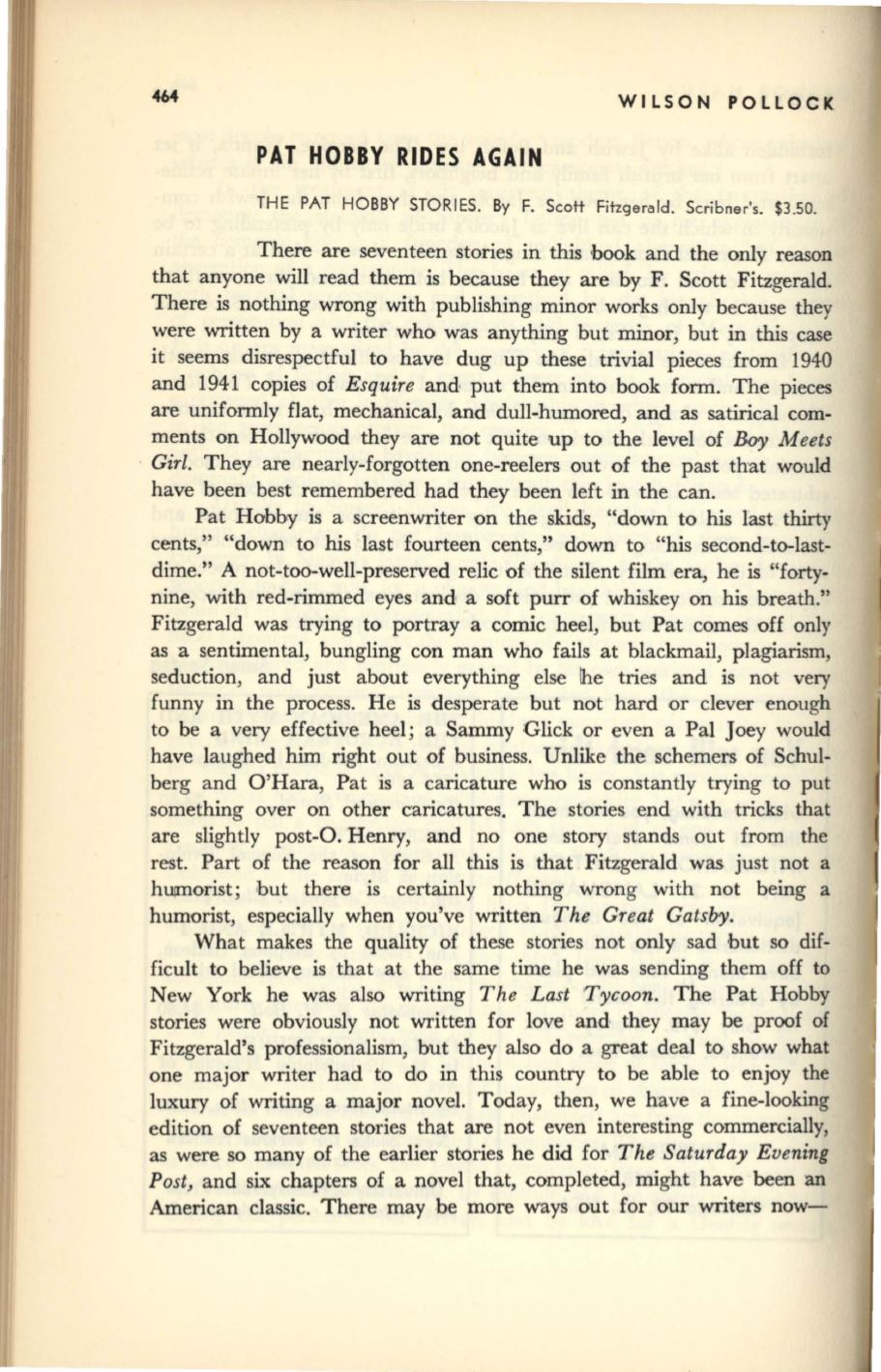
WILSON POLLOCK
PAT HOBBY RIDES AGAIN
THE PAT HOBBY STORIES. By F. Scott Fitzgerold. Scribner's. $3.50.
There are seventeen stories in this book and the only reason
that anyone will read them is because they are by F. Scott Fitzgerald.
There is nothing wrong with publishing minor works only because they
were written by a writer who was anything but minor, but in this case
it seems disrespectful to have dug up these trivial pieces from 1940
and 1941 copies of
Esquire
and put them into book form. The pieces
are uniformly flat, mechanical, and dull-humored, and as satirical com–
ments on Hollywood they are not quite 'Up to the level of
Boy
Meets
. Girl.
They are nearly-forgotten one-reelers out of the past that would
have been best remembered had they been left in the can.
Pat Hobby is a screenwriter on the skids, "down to his last thirty
cents," "down to his last fourteen cents," down to "his second-to-Iast–
dime." A not-too-well-preserved relic of the silent film era, he is "forty–
nine, with red-rimmed eyes and a soft purr of whiskey on his breath."
Fitzgerald was trying to portray a comic heel, but Pat comes off only
as a sentimental, bungling con man who fails at blackmail, plagiarism,
seduction, and just about everything else \he tries and is not very
funny in the process. He is desperate but not hard or clever enough
to be a very effective heel; a Sammy Glick or even a Pal Joey would
have laughed him right out of business. Unlike the schemers of Schul–
berg and O'Hara, Pat is a caricature who is constantly trying to put
something over on other caricatures. The stories end with tricks that
are slightly post-O. Henry, and no one story stands out from the
rest. Part of the reason for all this is that Fitzgerald was just not a
hl.liffiorist; but there is certainly nothing wrong with not being a
humorist, especially when you've written
The Great Gatsby.
What makes the quality of these stories not only sad but so dif–
ficult to believe is that at the same time he was sending them off to
New York he was also writing
The Last Tycoon.
The Pat Hobby
stories were obviously not written for love and they may be proof of
Fitzgerald's professionalism, but they also do a great deal to show what
one major writer had to do in this country to be able to enjoy the
luxury of writing a major novel. Today, then, we have a fine-looking
edition of seventeen stories that are not even interesting commercially,
as were so many of the earlier stories he did for
The Saturday Evening
Post,
and six chapters of a novel that, completed, might have been an
American classic. There may be more ways out for our writers now-


